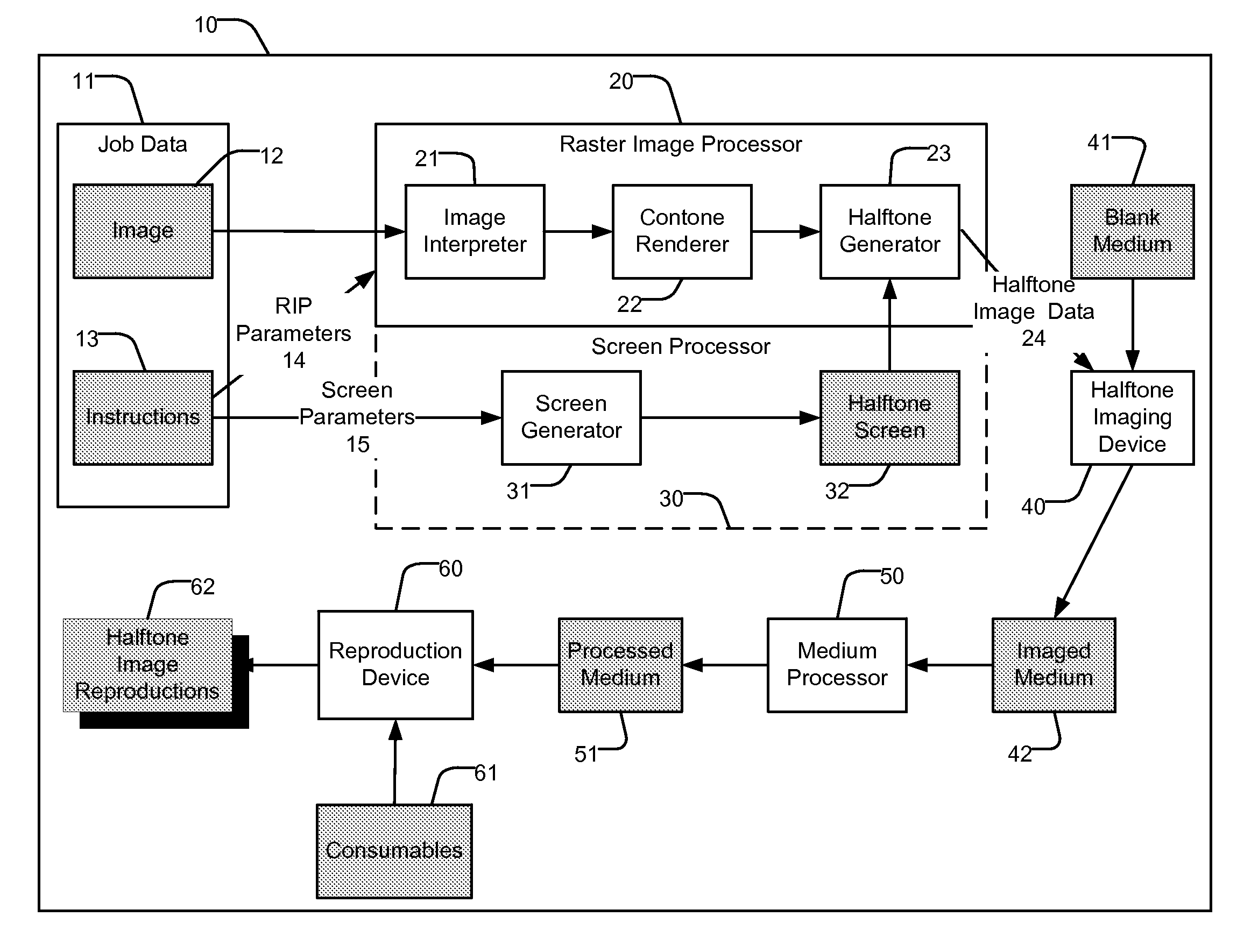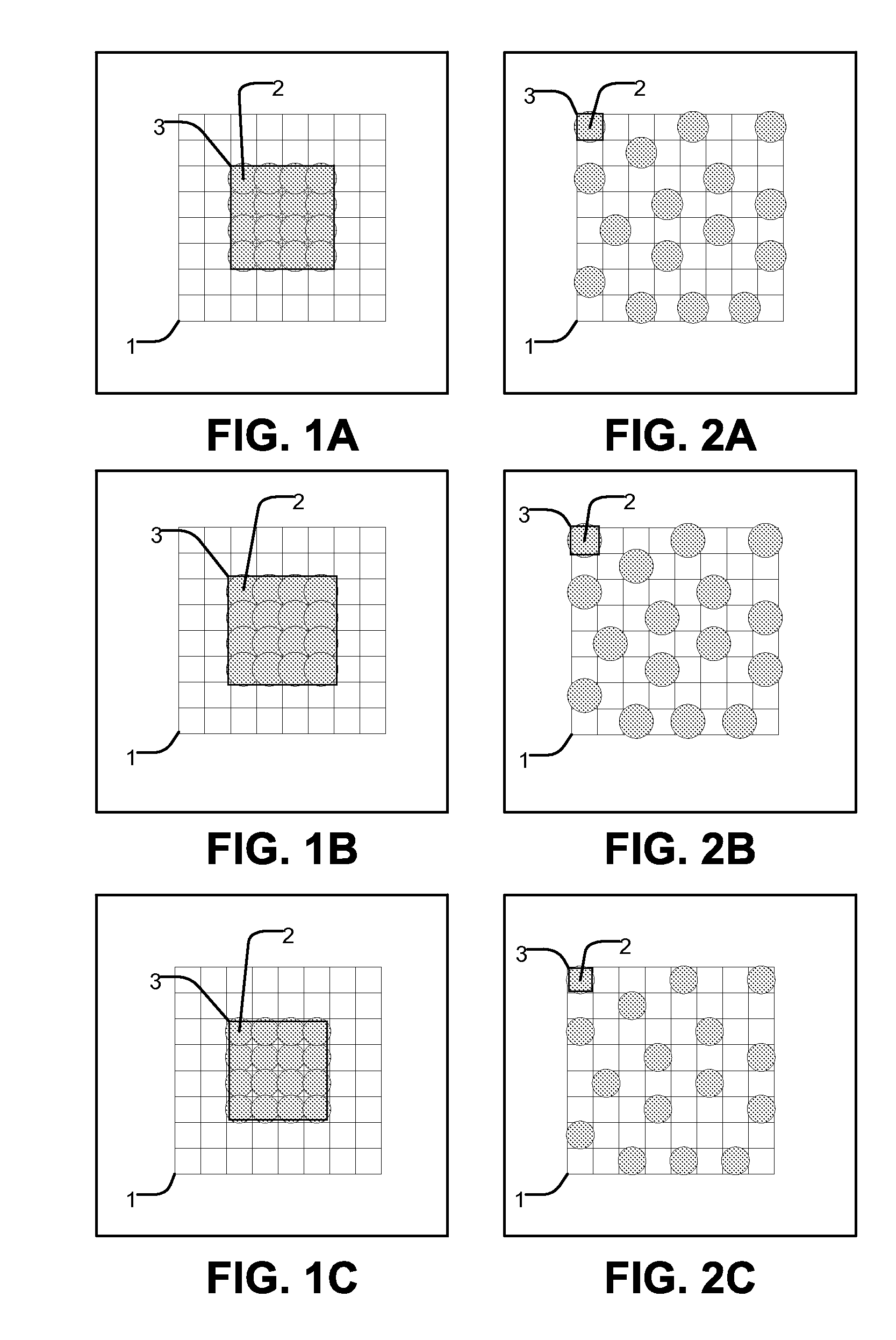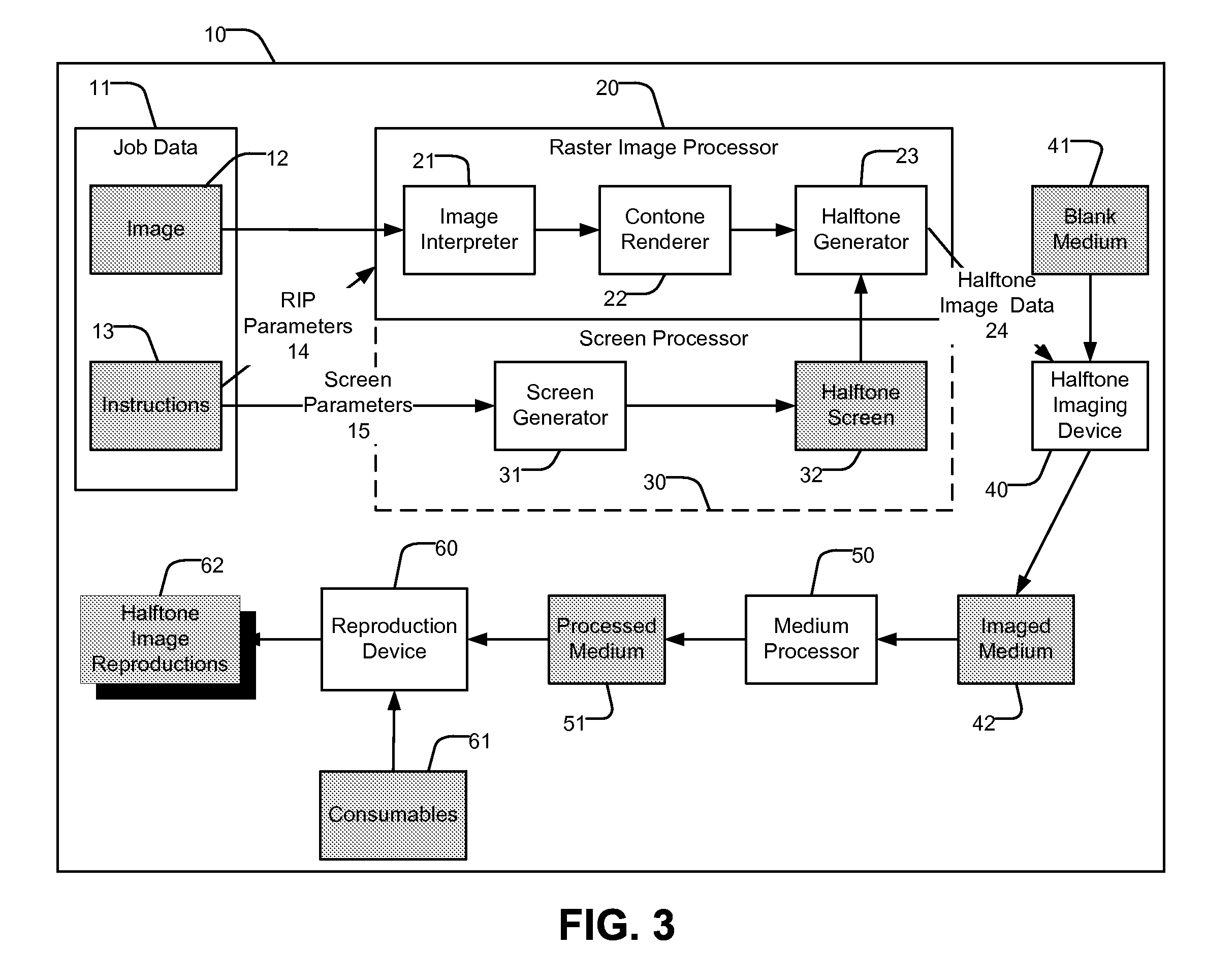Stochastic halftone images based on screening parameters
a technology of screening parameters and halftone images, applied in the field of image reproduction, can solve the problems of inability to use tonal compensation to correct for variation, relatively insensitive halftone screens, and prone to image reproduction process variations
- Summary
- Abstract
- Description
- Claims
- Application Information
AI Technical Summary
Benefits of technology
Problems solved by technology
Method used
Image
Examples
Embodiment Construction
[0049]FIG. 3 illustrates an exemplary printing system 10 for performing an image reproduction process according to one embodiment of the present invention. Job data 11 includes one or more contone images 12 and processing instructions 13. Contone images 12 and parameters 14, derived from processing instructions 13, are provided to a raster image processor (RIP) 20. RIP 20 generates data corresponding to halftone image data 24 representing contone image 12. Halftone image data 24 is provided to halftone imaging device 40 which exposes halftone image data 24 on blank imaging medium 41 to produce imaged medium 42. Blank imaging medium 41 can be a film, lithographic plate, flexographic plate, gravure cylinder, thermal transfer receiver as examples.
[0050]Depending on the type of blank imaging medium 41, imaged medium 42 may be further processed by medium processor 50 to produce a processed medium 51. For example, a lithographic plate may require initial heating, chemical developing, fina...
PUM
 Login to View More
Login to View More Abstract
Description
Claims
Application Information
 Login to View More
Login to View More - R&D
- Intellectual Property
- Life Sciences
- Materials
- Tech Scout
- Unparalleled Data Quality
- Higher Quality Content
- 60% Fewer Hallucinations
Browse by: Latest US Patents, China's latest patents, Technical Efficacy Thesaurus, Application Domain, Technology Topic, Popular Technical Reports.
© 2025 PatSnap. All rights reserved.Legal|Privacy policy|Modern Slavery Act Transparency Statement|Sitemap|About US| Contact US: help@patsnap.com



